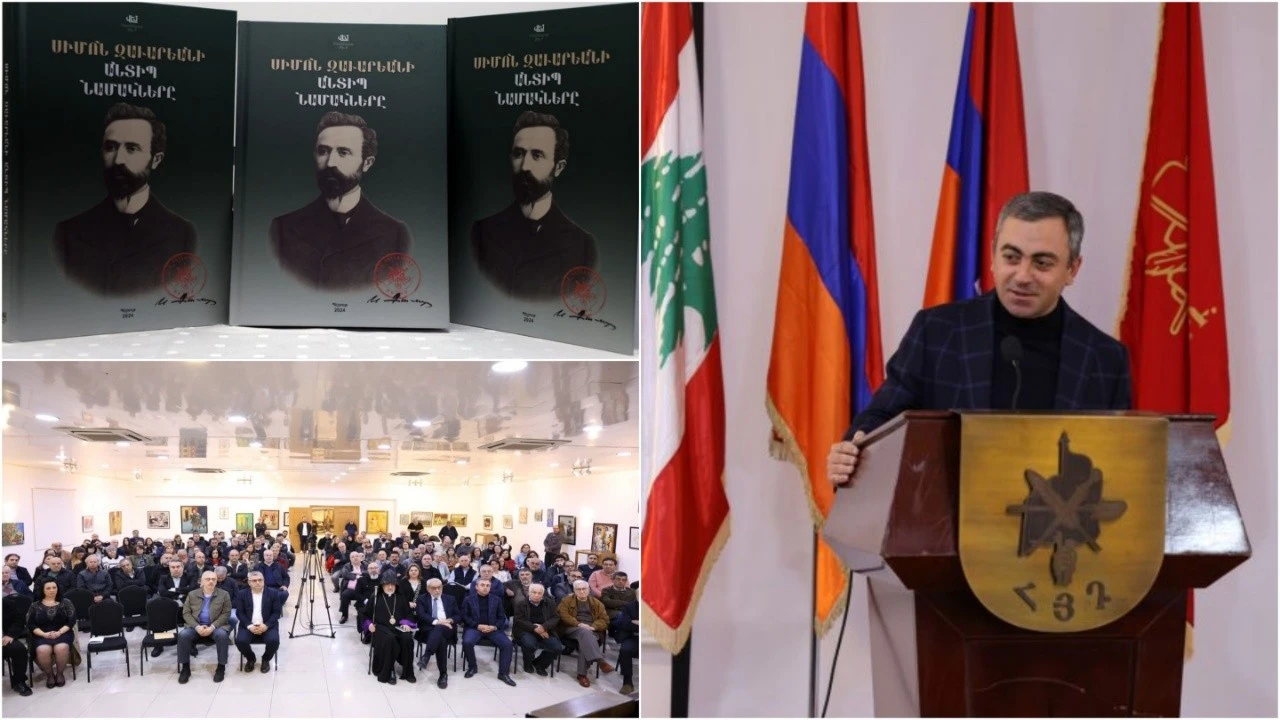On January 30, at the editorial office of "Azdak" daily, Historian, the Historian and the Historian and Historical Signs "Simon Zavaryan's Holiday Letters" was held at the editorial office of the "Vem" series.
In his opening speech on behalf of the propaganda body of the ARF Dashnaktsutyun's Central Committee, Harut Markosyan said that correspondence as a reliable and credible source contains rich materials for those interested in history.
Salbi Kurkchyan-Tashchyan, introducing the book, referred to Simon Zavaryan as a personnel, then the Dashnaktsutyun Trinity. The situation of the Armenians under Turkish yoke, the arrests of revolutionary figures, the prison and the bloodshed in the provinces, the struggle of the crucial life, which pushed the ARF figures to multiply the efforts.
In his speech, the representative of the ARF Dashnaktsutyun's Supreme Body of Armenia, in his speech, stated that Simon Vratsyan, Hrach Pampuk, and today the case continues that work today. By directing his speech to the great gratitude, Ishkhan Saghatelyan mentioned that he is a historian, a pedagogue, a pedagogue, archivarian and national-party figure, who is doing a very important and big job. According to the speaker, in the current conditions, when our past is distorted, history is the activity that E. Pambukyan is a very important job to understand, appreciate, and the upbringing of new generations in the way of presenting the path and activities of our figures.
Continuing his speech, I. Saghatelyan stated that there are figures whose biography cannot be separated from the history of our party or people, and one of them is when we get to know how the young man born in one of the remote villages of Armenia was so bright, revolutionary, organized. , a struggling for his people's pain, which is struggling with his people's pain. Zavaryan was there where the Armenians needed, where the party had revolutionary, organizational and enlightenment. From Sofia to Geneva, Caucasus, Peirut, Western Armenia.
Ishkhan Saghatelyan confirmed that Zavaryan has always linked the liberation of our people in his revolutionary and organizational activities with the opportunity to educate our people, to raise national consciousness, and we have the current issue.
Hovsep Ter Gevorgyan, a member of the ARF Bureau, addressed the light of the "Simon Zavaryan's Holy Letters". The member of the Bureau stated that Pambukyan was taken out of various sources, archival documents, correspondence, memoirs and the press from various sources, archival documents, and the public.
Holorum editor Yerva Pambukyan said that Zavaryan should be part of the founding trinch of our party and has been in the Caucasus for about 12 years after the foundation, it has become the author of the Eastern Bureau and the author of correspondence from Tbilissi (Georgia). starting. Then Zavaryan, for 12-13 years, was found abroad, first of all, in Geneva, where the Western Bureau was conducted by the Drovhakan Editorial Agreement with the responsible friends, bodies and the central committee. In 1904, after attending the Dashnaktsutyun's General Assembly, he was elected a member of the Middle East, mainly, and Beirut, which was a key connection with other countries. Here, one of the main cases of Zavaryan was to work with the students of American and French universities.
According to Yervand Pambukyan, Zavaryan, who is considered a violin of the ARF Dashnaktsutyun, is the fact that there are many interesting information about all that. He said that all these materials are in the ARF Archives, one of the first days of its establishment, and the main from the founders of the archive was Rostom, which organized the information to collect information. All of these materials were sent to Geneva, which was the center of the Armenian Cause during those years. In 1925, those archives were transported to Paris. There those archives found the closed envelopes, and were kept in the bank and were not subject to study. Pambukyan informed that World B. These archives were transported to the United States for security. They are currently in the United States, in the building of "Homeland" magazine, where special facilities are created or climatic or other views. Many Armenian and foreign researchers and historians use those archives today.


